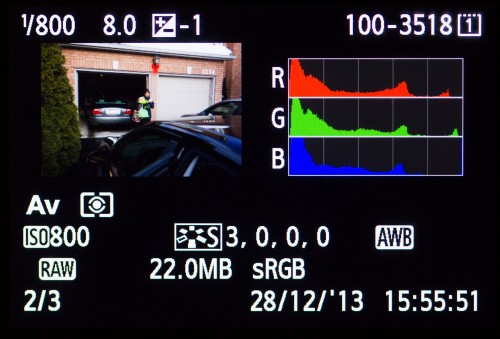You all press the “playback” button to review your photos, of course. But do you also benefit from the extra information you can see?
Additional Info (EXIF data): You can see additional information about your images (such as the image’s date and time; image name and number; the histogram (an exposure graph); detailed exposure and settings data. Like in the picture above.
To see such important data you press:
- Canon and similar: the INFO or DISP button. Press it repeatedly, and you will cycle through the different views.
- Nikon and similar: the UP or DOWN controls. Press them repeatedly, and you will cycle through the different views.
Try it now: press the Playback button, then repeatedly press INFO/DISP or UP/DOWN. What do you see?
Blinkies: some of these review modes can (or can optionally, when enabled) show blinking “highlights”. These blinking areas are the areas that are, or are close to, overexposed. Are blinking areas a problem? Not necessarily, but when half your subject’s face is blinking furiously, then, yes, of course.
___
These words are from my next e-book, “Mastering Your Camera-The Ultimate No-Jargon Guide to Using Any DSLR”, (ISBN 978-0-9918636-2-4) which will be released within the next couple of weeks.


Michael, is there any way to see exposure compensation info in Photoshop? (for images that are no longer on the memory card)
Yes, sure there is: you can view the EXIF data. Ctrl-Alt-I or FILE-FILE INFO.
But you can even view it on your Mac or PC by right-clicking and selecting “view info”. It is visible in Lightroom and similar software also. And finally, there is a very good command-line utility you may be able to use: Exiftool.